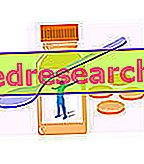Related articles: Interstitial cystitis
Definition
Interstitial cystitis is a non-infectious inflammation of the bladder. This condition occurs most frequently in women, aged between 20 and 50 years.
The causes are not yet known, but autoimmune disorders, vascular pathologies, neuropathies, recurrent infections of the urinary tract and traumas in the pelvic area have been hypothesised.
At the origin of the inflammation an alteration of the bladder wall was found. In particular, during the interstitial cystitis there is a loss of mucin from the urothelium, with a reduction in its protective function. This predisposes to the penetration of urinary potassium and other substances into the bladder wall, with stimulation of sensory nerves (a cause of chronic pain) and damage to the smooth muscles.
The consequence of this mechanism is the reduction of distensibility and bladder capacity.
Most common symptoms and signs *
- Dysuria
- Abdominal pain
- Pain during sexual intercourse
- Pelvic pain
- Testicular pain
- Articolar pains
- Muscle pains
- Painful ejaculation
- Headache
- nocturia
- pollakiuria
- Wheezing breath
- Urinary retention
- Strangury
- Bladder tenesmus
- Vaginismus
Further indications
Interstitial cystitis is initially asymptomatic.
The typical manifestations of the disorder appear and worsen over the years, as the bladder wall undergoes alterations. The disease can be extremely debilitating. Often, there is a sense of heaviness and pain at suprapubic, pelvic and abdominal level, associated with urgent and frequent urination stimulus (up to 60 times a day).
These symptoms worsen with filling the bladder and diminish when patients urinate. In some cases, the manifestations of interstitial cystitis intensify during ovulation, menstruation and sexual intercourse.
Symptoms can also get worse during seasonal allergies and periods of physical or emotional stress. In women, interstitial cystitis is often associated with vaginal pain, which can make it impossible to have sex. Men suffering from the disorder, on the other hand, may suffer from pain in the testicles, scrotum and perineum, as well as having painful ejaculations. Some patients also complain of muscle and joint pain, headaches and gastrointestinal problems.
The diagnosis is suggested by the anamnesis and the exclusion of diseases that cause similar symptoms, both clinically (the microbiological analyzes are negative), and by cystoscopy and biopsy of the bladder wall.
In particular, interstitial cystitis must be distinguished from urinary tract infections, sexually transmitted diseases, endometriosis, pelvic inflammatory disease, prostatitis, renal disorders and neoplasms of the bladder, cervix, uterus, ovaries and prostate.
Cystoscopy with hydrodistention of the bladder allows a characteristic picture to be highlighted. At the inspection, in fact, the irritation of the bladder mucous membranes is evident, which can present numerous dark red spots, similar to petechiae, sometimes ulcerated. Such lesions, called Hunner's ulcers, when present, are diagnostic for interstitial cystitis.
Instead, the histological examination following the biopsy reveals an inflammatory infiltrate typical of interstitial cystitis, with immune cells and tissue glomerulations, in the absence of infections or other pathologies.
To date, there is no definitive treatment for the disease, however most patients improve with pharmacological approaches (eg analgesics and pentosan by oral route, intravesical therapies etc.) and physical ones (eg gymnastics to strengthen the pelvic floor muscles ), aimed at reducing inflammation and bladder discomfort.
Surgery can be considered in extreme cases, which do not respond to conventional treatments. The management of interstitial cystitis also includes the exclusion of tobacco, alcoholic beverages, very spicy or irritating foods that can aggravate the problem of interstitial cystitis. Foods to be reduced or eliminated include citrus fruits, tomatoes, chocolate and caffeinated drinks.



